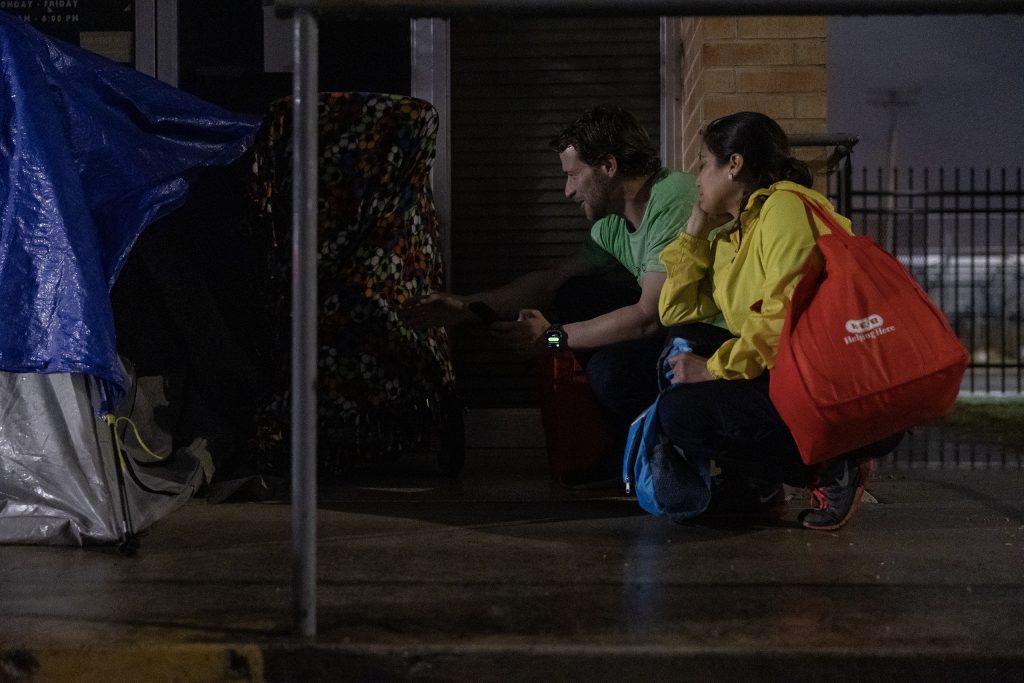Commentaries at the San Antonio Report provide space for our community to share perspectives and offer solutions to pressing local issues. The views expressed in this commentary belong to the author alone.
San Antonio stands out as a success story in the fight against homelessness, boasting the lowest “unsheltered count” — individuals living on the streets — among all major Texas cities. Despite a rising population and economic challenges, coordinated efforts in our community have kept unsheltered homelessness to a minimum. In fact, 73% of those experiencing homelessness in San Antonio reside in shelters, a testament to our inclusive and collaborative approach.
This accomplishment comes even as the Department of Housing and Urban Development (HUD) reports an alarming 18.1% increase in homelessness nationwide from 2023 to 2024. HUD’s Annual Homeless Assessment Report, released annually for Congress, highlights this sharp rise while offering insights into the underlying causes, including economic pressures and housing availability.
However, the report’s figures alone don’t tell the full story. Homelessness is more than just individuals living on the streets. It includes families, children, survivors of domestic violence and those in shelters or transitional housing. This broader understanding is critical in San Antonio, where rising housing costs, stagnant wages and inflation are driving more families into homelessness.
The point-in-time count, a one-night snapshot of individuals experiencing homelessness, is conducted annually during the last 10 days of January and informs the Annual Homeless Assessment Report. This data is essential not only for helping homelessness providers better serve the community, but also for shaping national priorities and guiding critical funding decisions. It’s important to recognize that the data captures individuals in shelters and transitional housing, not just those living on the streets. This comprehensive approach ensures an accurate assessment of the need for resources and services.
Addressing a growing crisis
San Antonio faces significant challenges. Approximately 18.7% of residents live below the poverty line, and families with children — already the fastest-growing demographic in homelessness nationwide — are feeling the greatest strain. Nationally, HUD reports a 39% increase in families experiencing homelessness. Locally, Haven for Hope has a no-turn-away policy for families, ensuring they are sheltered quickly. However, while in shelters, families are still considered homeless, underscoring the need for long-term solutions.
Some have speculated that immigration is a primary driver of rising homelessness. However, local data from the 2024 point-in-time count shows otherwise. Migrants and asylum seekers in San Antonio are directed to the Migrant Resource Center, not emergency shelters. No individuals reported becoming homeless directly after arriving at the center. Instead, San Antonio’s rapid population growth is a more likely factor, reflecting the challenges faced by one of the fastest-growing cities in the U.S. Despite rapid population growth, unsheltered homelessness in San Antonio and Bexar County has significantly decreased over the past five years (by 25% from 2019 to 2024), due to targeted strategies such as enhanced street outreach, expanded shelter capacity and a strong focus on housing coupled with essential supportive services.
Solutions grounded in housing affordability
While the challenges are significant, the solutions are clear. Reduced federal funding post-COVID, inflation and a lack of housing affordability have exacerbated the issue, but we know what works. Investments in eviction prevention programs, permanent supportive housing and policies that expand housing affordability are proven strategies.
Last year, Close to Home worked with over 60 partner agencies to develop the 2025 Alliance One-Year Action Plan, focusing on solutions that address the root causes of homelessness. While clearing encampments is often popular among concerned residents, these efforts must be paired with investments in housing affordability and supportive services to be effective.
Homelessness is unique among societal challenges in that it has a clear and actionable goal: ensuring everyone has a place to call home. It is also an issue that unites communities — no one wants to see individuals or families without shelter.
How you can help
You can be part of the solution. Support local nonprofits that provide housing and homelessness services. Advocate for the development and expansion of housing affordability initiatives. Promote programs that prevent evictions and create long-term housing solutions for individuals with complex needs. To learn more or request educational resources about homelessness for your business or neighborhood, visit closetohomesa.org. Join the Alliance to House Everyone and help us ensure that no one in San Antonio is left without a home.
Members of the Alliance to House Everyone contributed to this commentary.
!function(f,b,e,v,n,t,s)
{if(f.fbq)return;n=f.fbq=function(){n.callMethod?
n.callMethod.apply(n,arguments):n.queue.push(arguments)};
if(!f._fbq)f._fbq=n;n.push=n;n.loaded=!0;n.version=’2.0′;
n.queue=[];t=b.createElement(e);t.async=!0;
t.src=v;s=b.getElementsByTagName(e)[0];
s.parentNode.insertBefore(t,s)}(window, document,’script’,
‘https://connect.facebook.net/en_US/fbevents.js’);
fbq(‘init’, ‘291084294724606’);
fbq(‘track’, ‘PageView’, {“page_title”:”How San Antonio has been successful amid rising homelessness nationwide”,”user_role”:”guest”,”event_url”:”https:\/\/sanantonioreport.org\/san-antonio-success-amid-rising-homelessness-nationwide”,”post_type”:”post”,”post_id”:5393640});







